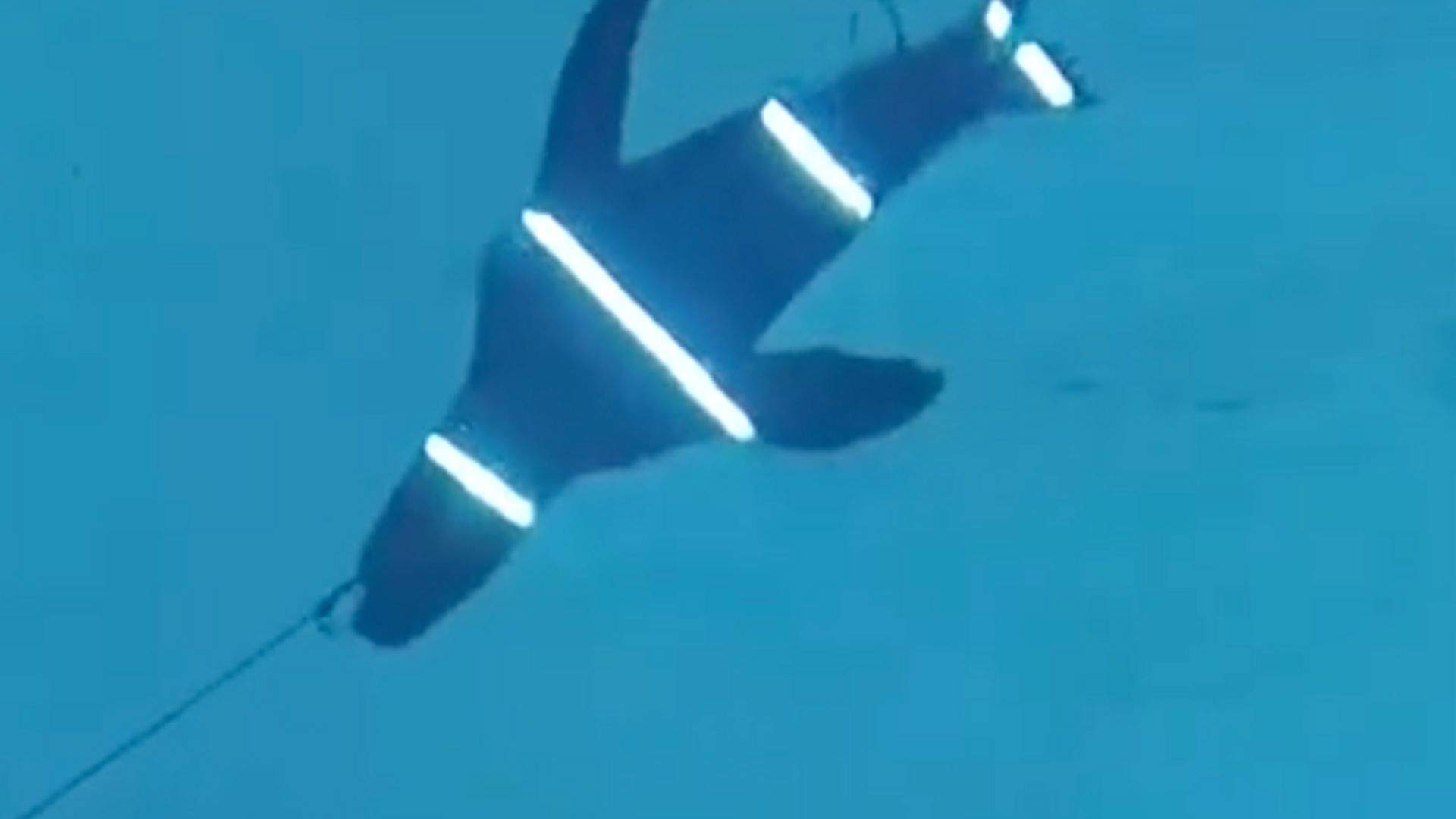
[JACK AYLMER]
A GROUNDBREAKING NEW STUDY SHOWS L-E-D LIGHTS MAY PREVENT GREAT WHITE SHARK ATTACKS ON SURFERS AND KAYAKERS.
AUSTRALIAN RESEARCHERS FOUND SEAL-SHAPED DECOYS WITH UNDERSIDE LIGHTING BLOCKED THE SHARKS VIEW OF SILHOUETTES AGAINST SUNLIGHT ABOVE, DETTERING GREAT WHITE ATTACKS BY OBSTRUCTING THE PREDATORS VISION.
[LAURA RYAN]
SO, WHAT WE’RE TRYING TO DO NOW IS MOVE FROM SEAL DECOYS INTO A SURFBOARD PROTOTYPE BY IMPLEMENTING L-E-D’S INTO THE BOTTOM OF THE SURFBOARD.
THE STUDY INVOLVED A BOAT TOWING A SEAL DECOY FOR DOZENS OF HOURS.
RESEARCHERS FOUND HORIZONTAL LIGHTING ON THE OBJECTS WAS MUCH MORE EFFECTIVE THAN OTHER POSITIONING.
THEY ALSO SAY FINDING THE CORRECT LEVEL OF BRIGHTNESS WILL BE CRUCIAL FOR THE TECHNOLOGY TO BE EMPLOYED IN SURFBOARDS.
[NATHAN HART]
SO, IF YOU DON’T GET THIS RIGHT, YOU MIGHT NOT HAVE AN EFFECT. IT’S ALWAYS A POSSIBILITY THAT ANY STIMULUS YOU PUT IN THE WATER MIGHT ATTRACT A SHARK. SO, WITH THAT CAREFUL TESTING, WE WORKED TO FIND THE OPTIMAL BRIGHTNESS, WHICH MOSTLY WORKS LIKE A COUNTER ILLUMINATION, BREAKS UP THE SILHOUETTE AND SEEMS TO DETER THE SHARK FROM ATTACK.
THE STUDY ALSO RELIES ON PREVIOUS RESEARCH, WHICH SHOWS GREAT WHITE ATTACKS ON HUMANS MAY BE A CASE OF MISTAKEN IDENTITY.
THE FISH HAVE WAY LESS ABILITY TO SEE SHAPES AND DETAILS THAN HUMANS.
[LAURA RYAN]
SOME OF THE PREVIOUS RESEARCH WITHIN MY GROUP ALSO FOUND OUT THAT SHARKS ARE POTENTIALLY COLORBLIND. SO, THEY DON’T SEE COLOR LIKE WE DO. THEY ALSO DON’T SEE AS MUCH DETAILS AS WE DO. SO, THEIR ACUITY IS A LOT LOWER THAN OURS.
[JACK AYLMER]
SCIENTISTS BELIEVE MORE STUDIES WILL BE NECESSARY TO SIMULATE SURFERS PADDLING.
THERE’S MORE WORK TO BE DONE TO FIND THE BEST WAY TO IMPLEMENT THE TECH.
WHILE SHARK ATTACKS ARE RARE, WORLDWIDE MOST BITES ARE LINKED TO PEOPLE SURFING OR PARTICIPATING IN BOARD SPORTS.
MOST FATAL BITES ARE FROM GREAT WHITES, BUT THE STUDY NOTES, IT MAY BE IMPORTANT TO TEST THE LIGHTS ON SHARKS WITH DIFFERENT PREDATORY BEHAVIOR.
FOR MORE ON THIS STORY– DOWNLOAD THE STRAIGHT ARROW NEWS APP OR VISIT SAN DOT COM.
FOR STRAIGHT ARROW NEWS– I’M JACK AYLMER.









